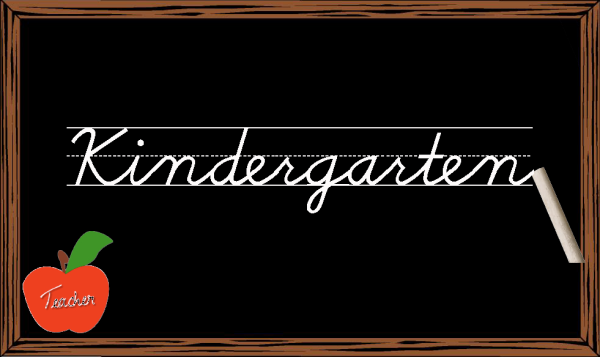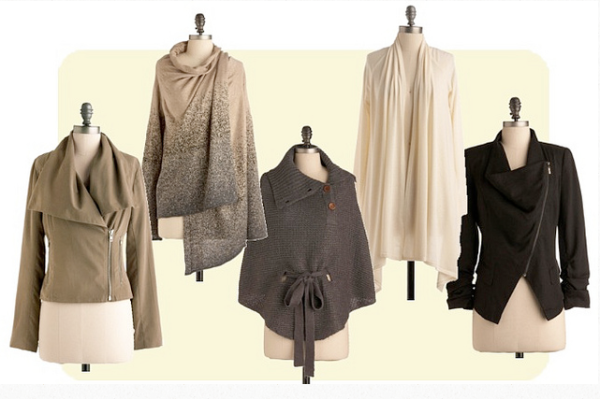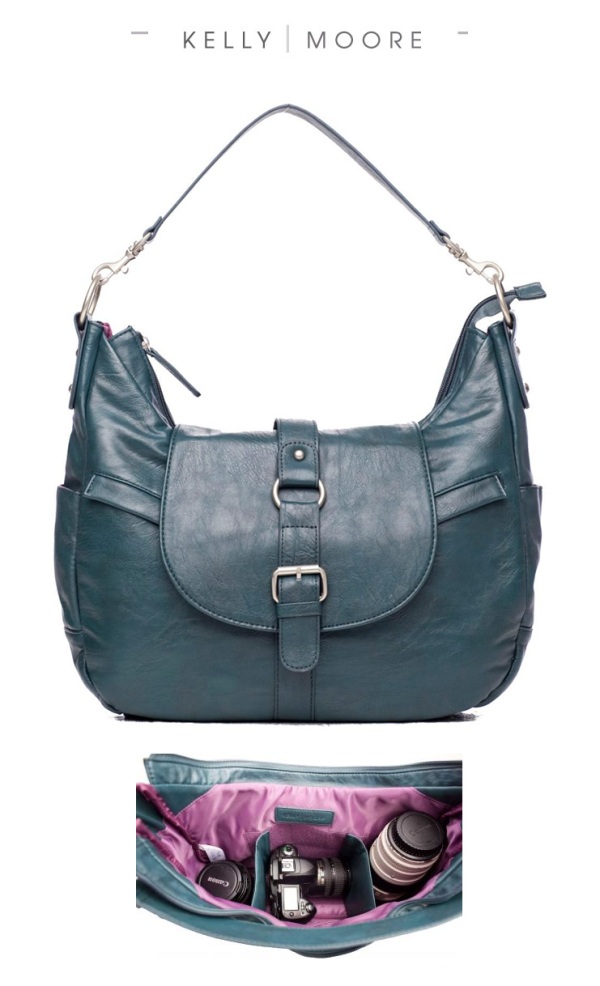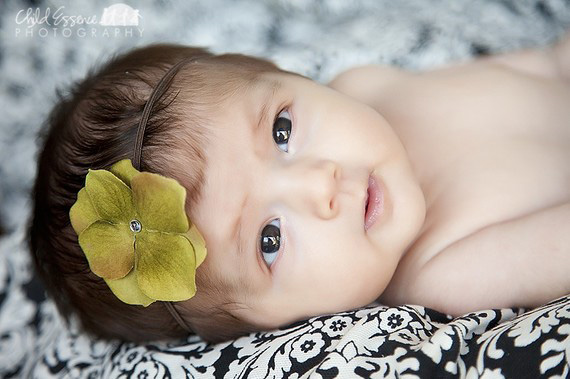We’re baaack!
After an extremely long maternity leave combined then with kids going back to school, family vacations, and the sick bug getting us a few times – we are finally back at Care Hound. We have missed posting so we are excited to start writing again, get our guest blogger’s posts up, and of course to get back to our Facebook page with all the fun stuff we find out there in the wonderful world wide web.
It’s so hard to believe that Halloween is just around the corner – and then even scarier to think that Thanksgiving and Christmas will come and go before we know it! But we do LOVE this time of year and all the fun that comes along with it. Every year we host Halloween at our house. I make up chili, we have mass amounts of food, and a few of our close friends come over. I think in all we never have less than 15 trick or treaters from little babies, to the big {almost too cool for Halloween – but thankfully not yet} middle schoolers. I love the packed house and the kids running all over the place. They all go trick or treating – they start out together in our circle, then the babies come back, then after a trip around the block the little kids usually come back, and then after the older kids have made sure to hit all 400 houses in the neighborhood, they return – candy filled pillow covers in tow. It’s one of my favorite nights of the year and so this year I have been doing my research, trying to find some fun {but also extremely simple} Halloween craft, decor, and food ideas. We have a couple listed below, but check out our Facebook page to see more of our favorites!
Apple Smiles (DisneyFamily.com)
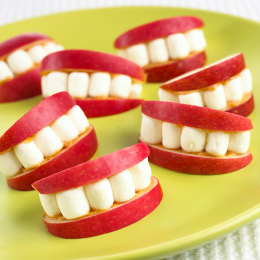 Less than 4 ingredients and a snack I know my kids would love.
Less than 4 ingredients and a snack I know my kids would love.
Cloud costume {found on Babble.com}
I love this DIY cloud costumes – it is so sweet!!
DIY leaf lantern {found on 5OrangePotatoes.com}
I think this would be a fun project to do with the kiddos and light up on Hallowen night.
Kindergarten Readiness
March is the time for March Madness, but in the pediatrics office, it is the start of the kindergarten physical season. The time when 4, 5 and 6 year olds tromp down the halls of the office to get their vision and hearing checked. They stand up so tall to get measured to see if they have grown and to see how much they weigh. The visit is fun. They get to show off their drawing skills, drawing different shapes, people and writing their names. They sit up tall and answer questions about their interests and likes and dislikes.
The current cut-off date for Omaha for kindergarten entrance is October 15th. That is, children need to have their birthday on or before October 15th in order to gain entrance to kindergarten. There is a proposal to change the date for the 2012/2013 season to July 1st. It can be a difficult decision for the parents of those children born in the summer to send their children onto kindergarten or hold them back an additional year.
Some children are developmentally ready at 4/5 to start kindergarten, however, some children are not. I had read an interesting article in the New York Times last year titled “The Littlest Red-shirts Sit Out Kindergarten.” The article spoke about parents holding children back an extra year for kindergarten primarily so that the child could gain height and wouldn’t be labeled the littlest kid throughout grade school and especially high school. Parents start to think about high school sports early and if their child is the youngest and the smallest on the team, they likely won’t play varsity sports.
The article brought up some interesting points. I started kindergarten on the younger end of the spectrum as did my husband and my son and thus far, we have done okay. In 1970, 14.4 percent of kindergartners started at age 4, but in the year 2010, the number had dropped to less than 10 percent. However, with an age span of 4 years to 6 years in kindergarten, this provides quite a challenge to the kindergarten teachers. The teachers have to be able to challenge the 6 year olds and keep them occupied but also to provide age appropriate material to the 4 year olds in the class as well.
How to decide?
I went to the books and researched this issue. The American Academy of Pediatrics generally does not recommend holding a child out of school for another year or putting them into a transitional or developmental kindergarten prior to the academic kindergarten year. In reviewing the literature on effects of younger age in starting school demonstrated a small disadvantage for the youngest children in the 1st grade but these academic disparities disappeared by 3rd grade.
From the pediatrician’s perspective, we have to look at the whole child and not an isolated picture of the child at 4, 5 or 6 years of age. We need to look at the child’s health status. If a child was born prematurely, had very low birth weight at birth or prenatal exposure to tobacco, alcohol or other drugs puts them at risk for low academic achievement. These children often will achieve their developmental milestones slower than their peers. The pediatrician needs to look at developmental milestones, motor milestones, but more importantly speech and language milestones. Appropriate achievement of speech and language milestones is a stronger correlate to school readiness than achievement of motor milestones.
What are the speech/language milestones?
2 years: Using “I,” “me”and “you,” although not necessarily correctly
Verbalizing immediate experiences, a base of at least 50 words, generally 50% of what a 2 year old will say is understandable to strangers
3 years: Using an active vocabulary of 1000 words, speaking clearly that strangers can understand
4 years: Telling long stories
5 Years: Speaking, using adult sentence structure.
Also, the pediatrician needs to judge the child’s interaction with his/her environment. We need to look at the interactions between the child and parent. We need to look at the respect of the parent for the child’s individuality and the conversations between parent and child. We need to look at the parent’s ability to maintain appropriate control of the child as well.
One of the best things, a parent can do for a child is to read to a child. Reading helps to improve the vocabulary of children and to improve their understanding of the world. Studies have shown that lack of exposure to books and reading has created a school readiness gap. Introducing books early helps children to enjoy books which can last throughout their lifetime.
If you have questions, the best source for answers is to look to your pediatrician and your preschool teachers as well.
Introducing our newest blogger!
I feel so fortunate for our team of guest bloggers here at Care Hound. We feel that we have the very best people writing for us to bring you posts, stories, and information from all different aspects of parenting. I am so excited to be introducing our latest addition to the team, Lindsey Elsaesser. Lindsey and her husband John live here in Omaha with their 2 girls, Lyla & Evie. I met their family while she was pregnant with their second daughter in what at the time seemed like a devastating situation. Evie had been diagnosed with a rare disease and was only expected to live seconds, minutes or hours after birth. After finding this out at 20 weeks Lindsey and John turned to their Faith and cherished the moments they had while she was pregnant. Her journey and Evie’s story is one of the most powerful, uplifting and incredible stories of Faith that I have been a part of. While Evie survived, she was re-diagnosed at 2 weeks old with a rare bone disease. They are learning about living with a child with special needs and embracing the lives that they were blessed with. Whether you have a special needs child, or just want to read about their story, or be inspired by their Faith – I encourage you to follow Lindsay here at Care Hound and on her blog at http://eviejayne.blogspot.com/. This is one {of about 100} of my favorite posts from her – http://eviejayne.blogspot.com/2011/01/my-thoughts-on-holland.html. To read more about Lindsey in her own words check out her bio!
Setting a good {financial} example
By Kirstin Ricketts with Vintage Financial
We all want the best for our kids. What can we do to make sure that they don’t fall into the trap of the financial stresses that so many face? From a very young age, your children can feel if you are stressed about your finances, and the way they view money and their finances will stem from the decisions that you are making in front of their very eyes. When speaking to a middle school class not too long ago, I had a student ask me if their parents were to die, if he would be responsible for their credit card debt. Yuck! Kids should not be burdened with this type of pressure! So what can you do?
One major first step is to get your own finances in order. Know what you own and what you owe. Create a net worth statement. This is as simple as taking a sheet of notebook paper and writing down all of the different accounts that you have. Don’t leave anything off, bank accounts, retirement plans, credit cards, mortgage…write it all down. Write down two to five goals that you would like to accomplish financially over the next twelve months. This may be to start or build your emergency fund, or to start saving for your child’s college, or to increase what you are putting into your retirement plan at work, or paying off a credit card. After writing down your goals, identify what action steps you will need to take to insure that at the end of this twelve month period that you will be in a better financial position than you are today. Put your plan on automatic pilot. We don’t need to be thinking about our finances everyday. There isn’t time for it! We need to be focusing what it truly important. If you want to pay extra towards your credit card so that you can pay it off, set up a higher automatic payment, if it’s saving for your child’s education, have the money taking automatically out of your account. Take yourself out of the equation. Finally, STICK TO IT! By writing down your goals, identifying what baby steps need to be made so that you can continue to have forward progress, and then putting your plan on automatic pilot you will be well on your way to making sure that twelve months from now, as you reflect back on your progress, that you will not have financially wasted the past year.
Another step that we can all take to set a good financial example for our children is to reflect on how we would want them to live, and then live that way ourselves. If you want them to learn to be frugal, stop buying everything under the sun. If you want to encourage them to be good savers, talk with them about how you save each month. If you want them to tithe to the church, allow them to see you writing your check out each week. If you want them to set goals, allow them to see you setting and discussing your goals.
Money is often times the elephant in the room that no one wants to discuss. How can we expect our children to follow our example if we give them no indication of what is going on with our own finances? Talk about money as a family. Get your own finances in order so and choose to live in a way that you would want your children to emulate.
As I meet with my clients when I work with the grandchildren, parents and children, it is common that all three generations will view their money in the same way. They often times have the same successes and struggles. Choose to life in a way that will set your children up to find success in the way to they view and handle their own money.
A Sophisticated Nursery
by Jessica McKay, owner of Birdhouse Interior Design
Here’s the deal, people: just because your newborn is a tiny little baby now, doesn’t mean they are going to stay that way for long. Oh, and on that note, your baby boy doesn’t have to enter this world in a sea of blue and that sweet girl of yours need not be surrounded by wall after wall of pink. In fact, why does the nursery need to be any less chic and sophisticated than the rest of the house? The answer is, it doesn’t!
Here are a few tips and ideas for expectant mothers or mothers of little ones on decorating your child’s room:
Chairs by Jennifer Delonge
- Think of the things you like and consider smaller versions of them. These kid-sized chairs look just as amazing as their grown-up counterparts. They will make your child feel special because they get to be just like mommy and daddy in their pretty chairs. Plus, you can put one of these into the nursery and as the baby grows there is no need to change the décor for several years. This aesthetic will last ten times longer than anything that screams “tiny baby”.
Via Design Crisis
- Start with a neutral background (white, gray, cream) and add color and personality in all your accessories. I’m willing to bet when your child turns about 5 or so, the little princess with her pink room may already love playing soccer and throwing mud a lot more than she likes twirling around in her tutu playing with her Barbies. Or, that little boy might really love to play on his little piano and be a budding musician and that train bordering his room doesn’t make much sense to who he’s starting to be as a person. The point is, you can change out accessories as your child grows and becomes more of an individual much easier than you can change the big stuff.
Jennifer Delonge’s son’s room (That chick rocks!)
3. Kid-friendly art doesn’t mean bad art! I’m not saying you should spend a fortune on original art for your child’s room. What I am saying is if you have taken the time to be thoughtful about everything else in there, why wouldn’t you put some effort into what will be on the walls for your child to see everyday as they grow? Maybe your sister is an amazing artist. Ask her to paint something for the baby’s room as your shower present. Or find a favorite book that you had as a little one, buy a used copy, rip a few pages out and frame them. There are a thousand options you can choose, just try to avoid the least thoughtful one, which is running to a big box store and buying something mass market.
STYLISH clothes for the nursing mama
Maternity clothes are every where you look, and any more you can get really cute maternity clothes and keep your style going through that 9 months. However people rarely warn you or talk about clothes for after the baby – when your shape and size is different and has different “functionality”. Here is a great post by Megan Hunt about “breastfeeding in style“.
My snow storm survival kit
Unfortunately my emergency list doesn’t include bottled waters, canned food, blankets, or flashlights – as it should. My survival kit is more geared towards my ultimate comfort and happiness rather than actual survival. If we do indeed lose power we will last about 25 minutes before the cold sets in and I give up. However when I hear the words “snow storm”, “blizzard” or “snow day” this is where my mind immediately goes as for things I can’t live without. {this would be the actual grocery list I sent to my husband of things to pick up on his way home last night}:
milk {I’m not completely unreasonable}
apples
cereal {we have jars of peanut butter and bread in the pantry so we technically can survive on these 5 things for weeks.}
Diet Coke
Crystal Light Energy
string cheese
chicken nuggets
dog food
Some type of dark chocolate with almonds – hersheys or dove.
And there we have it – a happy healthy snow day.
Ahhhh-choo!
By Dr. Elizabeth Walenz with Methodist Physicians Clinic
It is winter, which means we are seeing plenty of sniffles and sneezes
in the office. Many parents want to know how to tell when a cold is more
than a common cold, and when to worry.
This is the time of year when kids will bring home coughs and sniffles,
especially if your child is in daycare or school. These coughs and
sniffles often spread throughout the family, although different members
of the families may experience different symptions.
Babies may develop a low grade fever at the beginning of the illness
that should dissipate over the course of 2 to 3 days. They will often
develop nasal congestion and, sometimes, a cough. This nasal congestion
may cause difficulty feeding. I advise parents to keep saline nasal
drops on hand, and place 1 to 2 drops in each nostril prior to feeding.
After placing the drops in each nostril, count to 5, then use a nasal
bulb suction to remove any thicker mucus. The saline will help to break
up the thick mucus so baby can breathe more freely. If your baby still
has difficulty nursing or feeding, try 1 to 2 feedings with Pedialyte to
help to keep him hydrated.
Use the saline/bulb suction prior to sleep at night as well, and keep
the room moist at night to keep the mucus running. A cool mist
humidifier placed away from the baby’s crib will help to keep the room
humid. Babies should not have pillows in the crib; however, parents may
roll up a towel and place it under the head of the mattress to elevate
the child’s head while sleeping. No cough or cold medications are
recommended for children under the age of 4.
If your child has a persistent fever for more than 3 days, or a fever
that reaches 103 to 104 F, she should be evaluated by a physician. Also
call your pediatrician if a cold is lingering for longer than 4 to 5
days without improvement because colds often precede ear infections.
This also is the season for RSV (respiratory syncitial virus), so be on
the lookout for wheezing or noisy breathing. Parents can certainly
catch RSV, but it will usually manifest as the common cold in adults.
When babies and young children contract RSV, they often present with
fevers, tight repetitive cough or wheezing and noisy breathing. This
wheezing is usually heard or felt by parents when holding the child.
The child can almost seem to be working to push the air out of the
lungs. From the physiologic perspective, this is exactly what is
occurring. Younger children with RSV produce quite a bit of mucus that
can clog their airways and make it difficult to get air in, as well as
to push it out. A child with a worsening cough, difficulty feeding,
noisy breathing or appearing to be working to breathe should be seen by
a doctor.
As healthy children age, they often grow past the point of wheezing;
however, they can still catch the common cold. If a child has a
productive cough or congested nose, I often recommend fluids and rest.
Parents may offer Tylenol or Motrin for any fevers or discomfort. Saline
nasal spray can be used in the event of thick congestion ,as well as to
teach children to blow their noses as well. If a child is coughing quite
a bit at night and is over the age of 1, I recommend a teaspoon of
honey. Honey has been shown in some studies to help to coat the throat
and to help to suppress the cough reflex. The common cold will last 7
to 10 days. If the cold lasts longer than 10 days without improvement,
take your child to his or her primary care physician.
The best advice for this season is prevention. Encourage good
hand-washing habits, as well as keeping fingers out of ears and noses.
Liquid or chewable multivitamins can help to provide children over age 3
with beneficial Vitamin C. A well balanced diet, plenty of fluids and
rest also should help to keep your little ones healthy.
The benefits of being a Care Hound provider
No more signs in the yard!! When you sign up to be on the Care Hound directory you will always be visible to the parents seeking your services. Which means you have a “sign” online that gives them all your information. And the parents with access to that information will have paid for our service so you will know they are serious when they call.
Serious Inquiries! Because our site does charge the parents to gain access to your information – the parents
contacting you are serious about their child’s care and they will have the means to pay you for it! No more wasting time with parents trying to bargain down your price.
Keep your spots filled! Unfortunately you never know what could happen to have a child leave your daycare (a move, loss of a parents job, or health issues) – which leaves you with an empty spot to fill and a gap in your income. With Care Hound parents will always have access to your information and if you are full when they call – put them on a waiting list! That way you don’t have to decrease your income if a family can’t make it any more.
Support and Education! As our directory and business grows we want to be there to support – YOU – the providers! Taking care of children all day is an extremely tough and extremely important job. We want to help out by
providing you with educational opportunities and meet and greets through the year. This way you can meet other providers in your area, and have the chance to come to mini classes on topics you are interested in – whether it is CPR training, hearing from pediatricians or speech therapists, or learning some new crafts or activities to do with your kids. We will keep the topics broad to capture the interest of different childcare providers.
Show off a little! And last but definitely not least – our “provider of the month” that we are starting! This is where we choose one provider a month to highlight on our blog. We will come and interview you to find out more about your childcare and you! It’s your chance to shine and show off what makes your childcare special and stand out!
To add your listing to our directory visit www.carehound.com and click on the providers tab. It only takes a few minutes and is completely free with absolutely no obligations!!
If you know of a provider who could benefit from being on the Care Hound directory please share this information with them or download the PDF below and send it to them!
A few faves
Since we have been so behind on posting our favorite things this year – we are doing a quick catch up of some things that we would like to see under our tree, and some things that will be under our tree. Check it out!!
Necklaces from The Vintage Pearl.
I love this shop – the pieces are beautiful and I would love to have one with my kids names on it!
Baskets and pillows from Birdhouse Collectible
They have new and old beautiful gifts at BC. You really have to stop down and check out all their wonderful items! Pick up some to get your house ready for the holidays or surprise someone else!!
These products are made in a small town in Iowa – but they could stand up against any baby product out there! They hands down have the creamiest, silkiest, yummiest smelling baby lotion you can imagine. And I absolutely love their soy candles. They can ship anywhere so hop on their site today and place your order!
These bags have been on my wish list for over a year – they are gorgeous!! They are designed with a photgrapher in mind for all of their equipment – but you could really use them for anything – a purse, overnight bag, diaper bag – and of course a camera bag. Maybe someday I will have one of my own!
Headbands for my new baby girl
I’m usually a “bigger is better” sort of girl when it comes to headware for baby and little girls – but I adore these simple little headbands for babies that are from Creations by Chelsea on Etsy.
And this one by The Dress Up Chest on Etsy.
But of course I still love my over the top headbands…
How fabulous are these from The Girlie Girl Bowtique on Etsy?
Hope you have enjoyed our “wish list” and that has sparked some ideas for those that you have to shop for this holiday season. Check back soon – we still have more to come!


